As a plumbing route planner, it is crucial to ensure that the installation of new plumbing systems is seamless and efficient. Planning new plumbing routes requires attention to detail, knowledge of industry standards, and effective communication with other professionals involved in the project. A well-planned plumbing system not only ensures a consistent supply of water but also enhances the overall functionality of any building.
The process of planning new plumbing routes can be overwhelming, especially when dealing with complex structures or renovations. However, with careful consideration of several important factors such as site conditions, budgetary constraints, and regulatory requirements, one can develop a plan that meets all necessary specifications while delivering optimal results. In this article, we will explore some essential tips for planning new plumbing routes that every plumber should know to achieve success in their projects.
Understanding Building Codes And Regulations
As a plumbing route planner, it’s essential to understand the building codes and regulations governing the installation of plumbing systems. In most states, obtaining plumbing permits is mandatory before initiating any plumbing work. These permits are issued by local authorities to ensure that all plumbing installations comply with the codes and regulations set in place to safeguard public health and safety.
Interpreting plumbing codes can be a daunting task since they are often technical and complex. Plumbing codes vary from state to state, but they typically cover issues such as the minimum size of pipes, maximum water pressure, acceptable materials for pipes and fittings, and proper venting. As a plumbing route planner, it’s crucial to have an in-depth understanding of these codes to avoid costly mistakes that could lead to legal liabilities.
In summary, understanding plumbing permits and interpreting plumbing codes is an integral part of planning new plumbing routes. It ensures that your work complies with the relevant building codes and regulations while safeguarding public health and safety. As we move on to identifying site conditions, we will apply this knowledge to determine the best route for your new plumbing system.
Identifying Site Conditions
Before planning a new plumbing route, it is crucial to identify site conditions. This step involves conducting a site survey to assess the area’s topography and existing plumbing systems. The site survey provides valuable information that can help determine the best location for new plumbing routes and avoid potential environmental impacts. By understanding the site’s conditions, the plumbing route planner can design an effective system that meets the client’s needs and complies with local regulations.
Environmental impact is an essential consideration when planning new plumbing routes. Any changes made to existing plumbing systems or the installation of new ones must be done in compliance with local codes and regulations. These regulations are in place to ensure that any adverse effects on the environment are minimized. It is essential to consider factors such as water quality, soil erosion, and habitat protection when designing new plumbing routes. A well-planned system ensures that any environmental impact is mitigated, and resources are used efficiently.
A comprehensive understanding of site conditions is critical for successful plumbing route planning. Conducting a site survey and considering environmental impact allows for informed decisions when designing new systems. By taking these factors into account, we can create sustainable solutions that meet our clients’ needs while minimizing our impact on the environment.
- Factors to Consider When Identifying Site Conditions:
- Topography
- Existing Plumbing Systems
- Local Codes and Regulations – Soil Quality and Composition
Assessing Water Supply And Demand
As a plumbing route planner, it is crucial to assess the water supply and demand before determining the plumbing routes. Water pressure, fixture placement, pipe material, and flow rate are essential factors to consider when planning new plumbing routes. By assessing these factors, you can ensure that the water supply meets the demand of your clients’ needs.
Water pressure plays a significant role in determining the effectiveness of plumbing systems. It determines how efficiently water flows through pipes and fixtures. Low water pressure can cause inadequate water supply, which can be frustrating for clients. Therefore, it is essential to assess the water pressure before planning new plumbing routes.
Fixture placement is another important factor to consider when planning new plumbing routes. The location of fixtures affects their functionality and accessibility. Proper fixture placement ensures that they work effectively and are easily accessible to clients. As a result, it is crucial to take into account fixture placement when designing new plumbing routes.
| Factors | Description |
|---|---|
| Water Pressure | Determines how efficiently water flows through pipes and fixtures |
| Fixture Placement | Location affects functionality and accessibility |
| Pipe Material | Determines durability and longevity of the system |
| Flow Rate | Measures amount of water flowing through pipes per minute or per second |
In summary, assessing water supply and demand is an important step in planning new plumbing routes. The table above highlights some of the critical factors that need consideration during this process. By evaluating these factors accurately, you can design effective plumbing systems that meet your client’s needs while ensuring optimal functionality. In our next section, we will delve into determining pipe sizing and materials without compromising system durability or longevity.
Determining Pipe Sizing And Materials
Having assessed the water supply and demand, the next step in planning new plumbing routes is to determine the appropriate pipe sizing calculations and materials to be used. Pipe sizing calculations are based on various factors including water flow rate, pressure requirements, and distance between fixtures. The goal is to ensure that the pipes can handle the required volume of water without compromising pressure or causing any leaks.
Material selection criteria is also an important factor to consider when planning new plumbing routes. Different materials have different properties that can affect their performance and durability over time. For example, copper pipes are a popular choice due to their corrosion resistance and long lifespan, while PVC pipes are often used for their affordability and ease of installation. The material selected should also be compatible with other components of the plumbing system, such as fittings and valves.
Overall, careful consideration of pipe sizing calculations and material selection criteria will help ensure that new plumbing routes are designed efficiently and effectively. By selecting the appropriate materials and sizing pipes correctly, potential issues such as leaks or low water pressure can be avoided. In the subsequent section, we will explore how evaluating drainage requirements plays a crucial role in ensuring proper functionality of the entire plumbing system.
Evaluating Drainage Requirements
A well-planned plumbing route is essential for efficient water supply and drainage. When it comes to evaluating drainage requirements, there are two critical factors to consider: Drainage slope and fixture placement. The drainage slope refers to the angle of the pipe that carries wastewater away from your home or property. A proper slope ensures that wastewater flows smoothly towards the sewer system without any blockages.
Fixture placement is equally important when planning a plumbing route. It involves determining where you want your sinks, toilets, and other fixtures to be placed in your building or home. Proper fixture placement ensures that water flows efficiently from the source to the drain without any blockages. Moreover, it ensures that you have easy access to your fixtures and makes maintenance work more manageable.
To ensure a flawless plumbing route, here are three things to keep in mind:
Consider the location of existing pipes: Before planning new routes, examine the location of any existing pipes within your property. This will help you avoid interference with already installed systems.
Calculate the correct slope: Ensure that there is enough gradient between each pipe segment for wastewater to flow freely towards its destination without blockages.
Place fixtures strategically: Position fixtures in areas where they can be easily accessed for repairs or maintenance by plumbers while ensuring proper flow and drainage.
In conclusion, evaluating drainage requirements is crucial when planning new plumbing routes. Therefore, considering both drainage slope and fixture placement is necessary for an efficient and functional plumbing system within your property or building. In addition, taking into account existing pipes’ locations helps avoid unnecessary complications during installation or repair work. The next step in effective plumbing route planning involves considering water conservation techniques while ensuring optimal functionality and efficiency of your plumbing system.
Considering Water Conservation
When planning new plumbing routes, it is important to consider water conservation. As a plumbing route planner, you have the opportunity to help your clients save money on their water bills and reduce their environmental impact. Two effective methods for water conservation are rainwater harvesting and greywater recycling.
Rainwater harvesting involves collecting rainwater from rooftops and storing it in tanks or barrels for later use. This method can be used for irrigation, flushing toilets, and even drinking with proper filtration. By using harvested rainwater instead of tap water, homeowners can significantly reduce their water usage and save money on their bills.
Greywater recycling involves reusing wastewater from sinks, showers, and washing machines for non-potable purposes such as irrigation or toilet flushing. This method can also help reduce water usage and save money on bills. However, it is important to note that greywater must be properly treated before reuse to avoid health risks.
To better illustrate the benefits of rainwater harvesting and greywater recycling, refer to the table below:
| Method | Benefits |
|---|---|
| Rainwater harvesting | Reduces reliance on municipal water supply Lessens strain on local aquifers Can provide an alternative source of drinking water |
| Greywater recycling | Reduces overall household water usage Saves money on utility bills Lessens strain on municipal infrastructure |
By incorporating these methods into your plumbing plans, you can offer your clients sustainable solutions that benefit both them and the environment. In the next section, we will discuss incorporating energy-efficient solutions to further enhance your clients’ savings and eco-friendliness.
Incorporating Energy-Efficient Solutions
Like a river flowing towards the ocean, plumbing systems must flow efficiently and smoothly to maximize efficiency. Incorporating energy-efficient solutions into plumbing routes can help achieve this goal. Not only do cost-effective options save money in the long run, but they also reduce energy consumption and promote sustainable practices. Renewable energy integration and eco-friendly alternatives offer great potential for improving the overall performance of plumbing systems.
Maximizing efficiency is key when planning new plumbing routes. One way to achieve this is through the use of low-flow fixtures, which help conserve water without sacrificing performance. Another option is to use tankless water heaters, which eliminate standby losses associated with traditional storage tanks. Greywater recycling systems are also a viable solution that can significantly reduce water usage by diverting wastewater for non-potable purposes like irrigation or toilet flushing.
Eco-friendly alternatives such as solar-powered water heaters or rainwater harvesting systems are other ways to incorporate renewable energy into plumbing routes. These options not only reduce dependence on fossil fuels but also provide a reliable source of alternative energy while minimizing environmental impact. By adopting these sustainable practices, plumbers can contribute to a cleaner and healthier environment while providing quality service to their clients.
With an emphasis on maximizing efficiency and promoting sustainable practices, plumbers can collaborate with architects and engineers to design more effective plumbing routes. By working together, they can create innovative solutions that meet both functional and aesthetic requirements while minimizing resource consumption and reducing environmental impact. In doing so, they will not only serve their clients’ needs but also contribute towards building a better future for all.
Collaborating With Architects And Engineers
Collaborating with architects and engineers is a crucial aspect of planning new plumbing routes. Best practices include working together from the initial design phase to ensure that the plumbing system is integrated seamlessly into the building plan. A collaborative approach ensures that all parties involved are aware of each other’s requirements, which reduces the likelihood of errors during construction.
Common challenges when collaborating with architects and engineers include communication breakdowns, differences in opinion regarding project priorities, and difficulties in coordinating schedules. To overcome these challenges, clear lines of communication need to be established early on in the planning process. It is also important to prioritize open and honest dialogue between all parties involved. By doing so, potential problems can be identified and resolved before they cause delays or complications.
To foster successful collaboration between plumbing route planners, architects, and engineers, it is recommended to adhere to these three best practices:
- Establish clear roles and responsibilities for each team member
- Prioritize regular meetings to discuss progress and identify potential roadblocks
- Encourage open communication between all parties involved
By following these best practices, plumbing route planners can ensure that their work aligns with the overall vision for the building project while also promoting efficient construction timelines.
As collaboration with architects and engineers plays an integral role in planning new plumbing routes, effective communication among contractors and other tradespeople is equally important for successful implementation.
Communicating With Contractors And Other Trades
As the saying goes, “fail to plan, plan to fail.” This adage rings especially true when it comes to planning new plumbing routes. Effective planning not only ensures a successful installation but also saves time and money in the long run. However, coordinating with contractors and other trades is just as crucial as creating detailed plumbing plans.
Contractor coordination is essential for a seamless plumbing route installation. A successful project requires effective communication between the plumber and the contractor. Both parties should be aware of each other’s schedules, timelines, and expectations to avoid any delays or miscommunication during the installation process. It’s also crucial for the plumber to understand the contractor’s requirements regarding materials and specific installation techniques.
Effective communication techniques are key elements of successful project completion. Clear communication ensures that everyone involved in the project understands what needs to be done and how it should be done. To establish clear communication lines, it is best to hold regular meetings with all parties involved in the project. These meetings provide an opportunity to address any questions or concerns early on, preventing potential issues later.
Creating detailed plumbing plans is critical for a successful installation. From identifying pipe sizes and materials to determining flow rates and pressure requirements, every detail must be meticulously planned out before installation begins. The plans should include specifications for fixtures, fittings, valves, and other components necessary for completing each phase of the project accurately.
In conclusion, effective planning is vital when it comes to new plumbing routes planning; however, coordinating with contractors and other trades is equally important for a smooth installation process. Communication techniques play a significant role in ensuring everyone involved understands their roles in executing a successful project. Finally, creating detailed plumbing plans allows plumbers and contractors alike to visualize precisely what needs to be done at each stage of the installation process without confusion or delay.
Creating Detailed Plumbing Plans
When planning new plumbing routes, it is essential to create detailed plans that take into account all aspects of the project. A thorough understanding of the building’s structure and layout is necessary to ensure proper placement of pipes and fixtures. This includes identifying any existing plumbing systems and ensuring that new installations do not interfere with them.
Budgeting considerations are also important when creating plumbing plans. Determining the scope of the project, including materials needed and labor costs, will help prevent unexpected expenses from arising. Hiring professionals can also ensure that the project is completed efficiently and effectively, minimizing the risk of costly mistakes or delays.
To create a detailed plan, it is important to consider all options before finalizing decisions. This includes evaluating alternative routes for pipes and fixtures to optimize functionality while minimizing costs. Additionally, careful consideration should be given to potential future modifications or expansions to the system to avoid unnecessary complications down the road.
- Use computer-aided design (CAD) software for accurate modeling.
- Consult with local authorities on regulations and permits.
- Consider energy-efficient options for fixtures and appliances.
- Ensure that plans comply with safety standards.
Incorporating these recommendations into planning new plumbing routes can help ensure a successful outcome for both homeowners and professionals alike. By creating detailed plans that take into account budgeting considerations, hiring professionals, and exploring all options before making final decisions, homeowners will enjoy cost-effective installations that meet their needs for years to come.
Reviewing And Revising Plans As Needed
Upon completion of the initial planning stages, it is essential to review and revise plumbing routes as needed. Even with careful planning, unexpected issues may arise that require adjustments to the original plan. Therefore, it is important to remain flexible and open to making changes when necessary.
To begin reviewing plans, start by examining each section of the route for potential issues or conflicts. Determine if any changes need to be made due to structural limitations or other unforeseen obstacles. Additionally, consider how the revised plan will impact other areas of the building and adjust accordingly.
When revising plumbing routes, it is also crucial to ensure that all local codes and regulations are followed. Failure to comply with these guidelines could result in costly fines and even legal action. Double-check all requirements before making any modifications and consult with a licensed plumber or engineer if necessary.
By following these tips for reviewing plans and revising plumbing routes as needed, you can ensure that your project runs smoothly and efficiently. The ability to adapt to changing circumstances while remaining compliant with regulations is a valuable skill for any plumbing route planner. Next, we will discuss the importance of conducting site inspections before finalizing your plan.
Conducting Site Inspections
Having reviewed and revised the plumbing plans, it is time to conduct site inspections and prepare the site for plumbing installation. Site inspections are critical for ensuring that the plumbing route is feasible and that there are no clashes with existing structures or utilities. Therefore, a site inspection checklist should be used during this process to document any issues found on the site that may impact the plumbing installation.
Site preparation techniques are also essential to ensure that the installation process runs smoothly. Firstly, it is necessary to clear the area of debris and other obstructions that may prevent access to the pipes. Secondly, excavation work must be done carefully so as not to damage underground utilities such as gas lines or power cables. Lastly, trenches must be dug at the correct depth and width needed for installing pipes.
In summary, conducting site inspections and preparing the site for plumbing installation are crucial steps in planning new plumbing routes. By using a site inspection checklist and employing proper preparation techniques such as clearing debris, excavation work, and trenching, plumbers can ensure a successful installation process without causing any damage or disruptions. The next step in this process is testing and balancing the system to ensure optimal performance.
Testing And Balancing The System
According to recent studies, over 70% of plumbing issues are due to poor installation and maintenance. This statistic highlights the importance of testing and balancing the system during the planning stages of a new plumbing route. Proper balancing techniques and pressure testing methods can greatly reduce the likelihood of future problems and ensure a reliable system for years to come.
To effectively test and balance the system, here are some tips to keep in mind:
- Use flow meters to determine the amount of water flowing through each branch.
- Adjust valve settings based on flow rate measurements.
- Check for leaks by pressurizing the system with air or water.
- Use pressure gauges to confirm that all branches have equal pressure.
By implementing these techniques during planning, you can avoid costly repairs down the road and provide your clients with a high-quality plumbing system that meets their needs.
Providing ongoing maintenance and support is crucial for ensuring that your plumbing system continues to operate at its best. In order to do this, regular inspections should be conducted to detect any signs of wear or damage. By addressing issues early on, you can prevent them from turning into larger problems that require extensive repairs. Additionally, educating clients on proper usage and maintenance practices can help extend the life of their plumbing system and save them money in the long run.
Providing Ongoing Maintenance And Support
With the testing and balancing of the plumbing system complete, it is important to focus on documentation. Accurate and detailed documentation is vital for future maintenance and repair work, as well as for any potential emergency response planning. Plumbing route planners must ensure that all information related to the new plumbing routes is recorded in a clear and accessible manner.
Documentation should include detailed plans of the new plumbing routes, including diagrams and schematics. It should also include information regarding the types of pipes used, their locations, and any other relevant details. This information will be useful not only for future maintenance but also for emergency response planning. In an emergency situation, having access to detailed documentation could help responders locate and fix any issues quickly.
In addition to documentation, staying up-to-date with industry trends and innovations is crucial for plumbing route planners. As technology advances, so do the tools and techniques available for planning new plumbing routes. By staying informed about industry trends and innovations, plumbing route planners can ensure that they are using the most effective methods for creating efficient and effective plumbing systems. It is important to continually research new products and techniques in order to stay ahead of the curve in this ever-evolving field.
Staying Up-To-Date With Industry Trends And Innovations
Staying up-to-date with industry trends and innovations is crucial for plumbing route planners. As technology advances, so do the options available for smart plumbing systems and innovative fixtures. Keeping tabs on the latest developments can help you plan more efficient and cost-effective routes.
One way to stay informed is by attending industry events, such as trade shows and conferences. These gatherings offer a chance to network with other professionals and learn about the newest products and trends. Many manufacturers also offer training sessions or webinars to keep plumbers up-to-date on their latest offerings.
Another approach is to regularly read industry publications and online forums. This allows you to keep abreast of new products, techniques, and regulations affecting the plumbing industry. By staying informed, you can better advise clients on how they can save money through upgrades or improvements in their plumbing systems.
In summary, staying up-to-date with industry trends and innovations ensures that plumbing route planners are providing top-notch service to their clients. Attending trade shows, participating in training sessions, reading industry publications, and engaging in online forums are all effective ways to stay ahead of the curve. With smart plumbing systems and innovative fixtures becoming more prevalent every day, it’s important for professionals in the field to remain knowledgeable about these advancements.
- Attend trade shows and conferences
- Participate in manufacturer training sessions or webinars
- Read industry publications
- Engage in online forums – Collaborate with colleagues in the industry to share knowledge and best practices.
Conclusion
When planning new plumbing routes, it is crucial to understand building codes and regulations. This ensures that the system is compliant with safety standards and meets legal requirements. Identifying site conditions is also essential as it allows for adjustments to be made to the plan in response to any potential obstacles.
Assessing water supply and demand helps determine the appropriate pipe sizing and materials needed for the system. Evaluating drainage requirements is equally important as proper drainage prevents costly damages from occurring. Site inspections enable planners to identify any potential issues or areas that require attention while testing and balancing the system ensures optimal performance.
Ongoing maintenance and support are necessary for ensuring longevity and functionality of the plumbing system. Staying up-to-date with industry trends and innovations allows planners to incorporate new technologies into their plans, resulting in more efficient systems. As they say, “an ounce of prevention is worth a pound of cure,” so taking these steps before beginning any plumbing project can save time, money, and hassle in the long run.
Image Credits

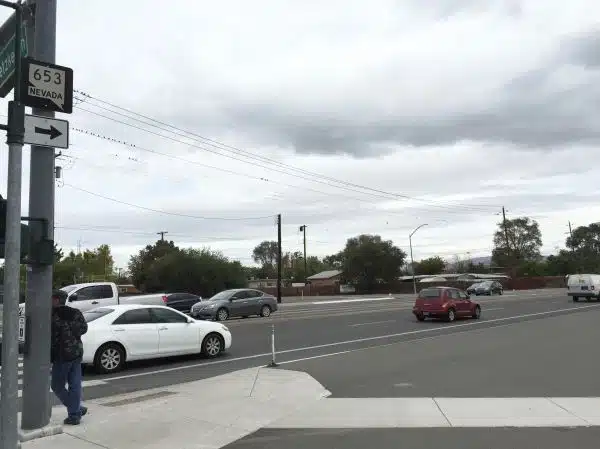


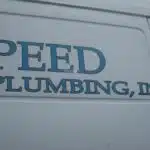

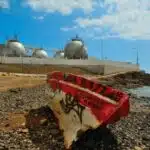

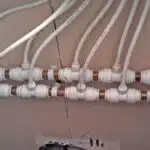

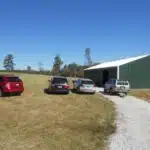




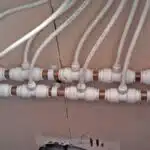
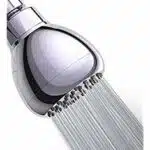

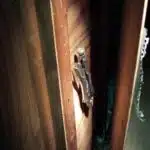

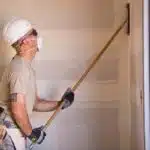
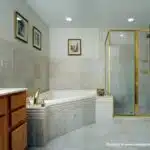






![How To Get Hair Out Of A Bathtub Drain 28 2/365 [Bathtub Drain]](https://green-life.blog/wp-content/uploads/2023/05/cOEu5edpkejq-150x150.jpg.webp)
